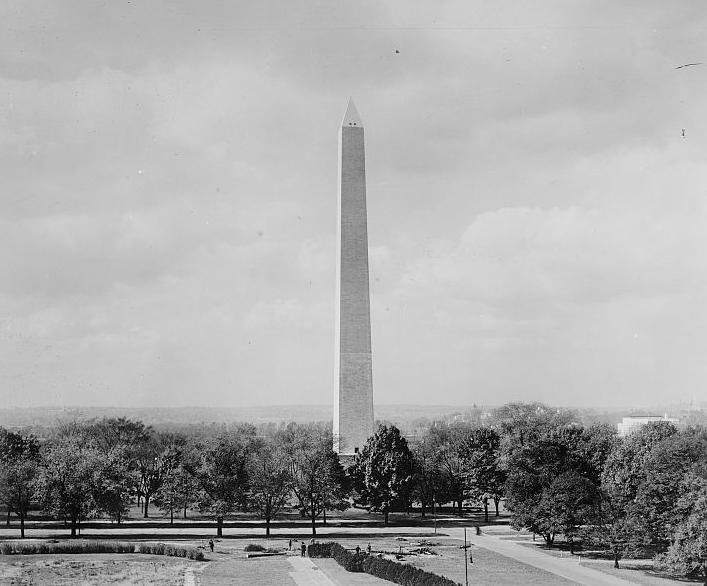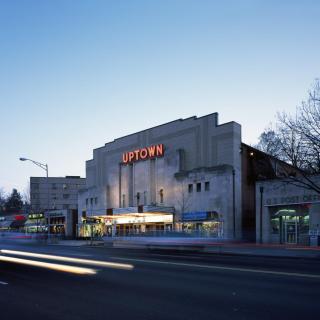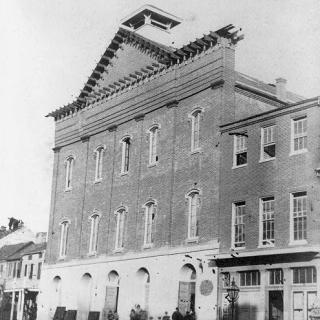When the Washington Monument Suffered from "Geological Tuberculosis"
The Washington Monument reopened in spring of 2014, after being closed for repairs needed to repair damage suffered during an August 2011 earthquake. The latter included cracks that developed in the monument's marble panels and damage to the mortar that holds the approminately 555-foot-tall structure together. But those problems aren't the first woes that have plagued the monument, which will mark the 130th anniverary of its completion in December. Back in 1911, for example, some believed that monument was afflicted with an even more peculiar problem, trumpeted in a December 1911 article in Popular Mechanics magazine by John S. Mosby, Jr., which bore the provocative title: Washington Monument Attacked by 'Geological Tuberculosis.'" Mosley wrote that the monument "is suffering from a disintegration that, while not immediately fatal, will materially shorten its life."
The reporter who achieved this scoop was himself an intriguing character. The son of Civil War Confederate guerrilla leader Gen. John S. Mosby, he was a University of Virginia law school graduate, and worked for a while as a lawyer for mining companies before becoming a journalist. In addition to his legal and mining expertise, he reportedly was an authority on the games of chess and poker. As Mosley explained, the problem stemmed from the age and substandard quality of the oldest part of the monument's masonry, which dated back to the period before constuction was halted from 1854 to 1879 because of a lack of funds. The space between the outer marble blocks and the inner wall of granite and other hard stones had been filled with "all manner of rubble" held together by cement, instead of sturdy masonry, Mosby wrote. "It is the interior filling between these walls that is now, through the deadly effect of heat and cold and dryness and damness attacking it alternatively, beginning to deteriorate and ooze out between the joints of the outer wall and the crevices made by the action of the elements," he explained.
Worse yet, he reported, water had penetrated the shoddily-constructed filling layer, and was eroding it. As a result, "lime substances" were oozing out from between the joints in the outer masonry and then, after exposure to air, hardening into "scales or barnacles." If that didn't sound disturbing enough, Mosby told readers that a tourist visiting the monument had described it as suffering from something akin to "geological tuberculosis."
Mosby got some of his information from the monument ground's superintendent, Bernard Green, whom Mosby informed readers would not venture an estimate of how long the deterioration process would have to continue before the base of the monument was destroyed. But another of his sources made the situation sound grave. Professor G.P. Merrill, head curator of geology at the Smithsonian's National Museum of Natural History and author of an 1895 scientific article entitled "Disintegration of the Granatic Rocks of the District of Columbia," was less optimistic. Merrill told Mosby that that the forces of nature, combined with construction blunders, would bring about the premature demise of the monument, long before other buildings of the same age. The monument "is, so far as quality of material is concerned, not only wrong side up, but wrong side out as well!" Merrill concluded. "The very best and most enduring material of the entire structure lies in the inner courses of the upper portion of the work....the poorest and weakest of the material is comprised in the outer portion of the first 190 feet, which has to bear the weight of the superincument 350 feet and more, and has to receive, besides, the wash from all the rain that falls upon the portion above."
Merrill told Mosby that the monument could be saved, but that the fix would be drastic. Basically, the top portion of monument would need to be shored up, while the outer walls and rubble filling for the first 190 feet was removed and replaced with new, solid masonry.
This wasn't the first time that questions about been raised about the stability of the monument. Back in 1885, for example, the Engineering News-Record published this lengthy article about engineers' concerns about the rubble inside the walls. Nevertheless, Mosby's story was sufficiently sensational that it was republished in the Washington Post as well, and made for alarming newspaper headlines across the country. The U.S. Army Corps of Engineers, however, didn't go along with Merrill's extreme prescription. Instead, as University of Maryland engineering student Irving Phillips detailed in a 1959 honors thesis, the Corps instead simply drilled holes into the monument's walls and then pumped in pressurized concrete, which then hardened to strenghten and solidify the interior.
As it happened, the monument long outlived Mosby, the writer who had prophesied its premature demise. In August 1915, he died at age 51 after an operation for a throat malady. Merrill, who was elected to the National Academy of Sciences in 1922, passed away in 1929.






![Sketch of the mythical fuan by Pearson Scott Foresman. [Source: Wikipedia]](/sites/default/files/styles/crop_320x320/public/2023-10/Goatman_Wikipedia_Faun_2_%28PSF%29.png?h=64a074ff&itok=C9Qh-PE1)












